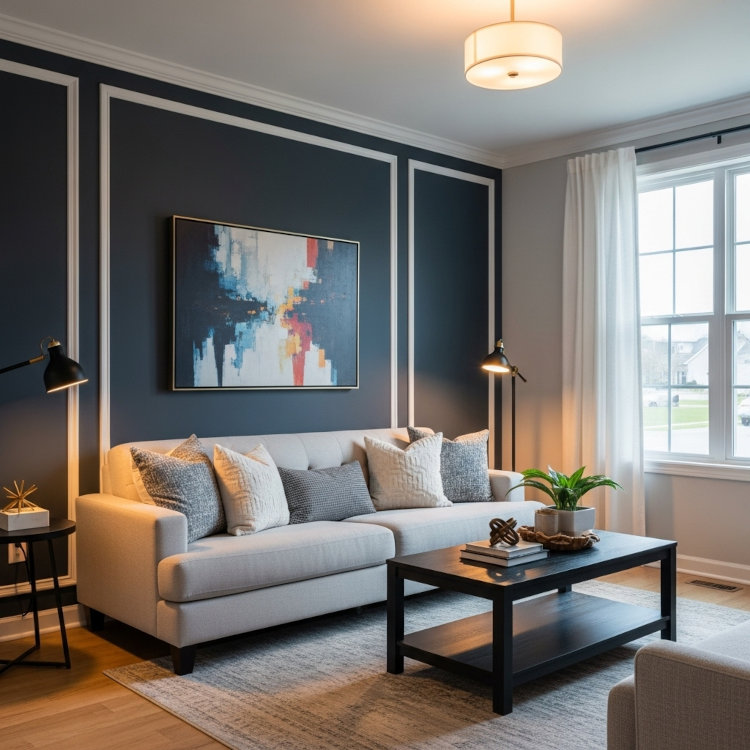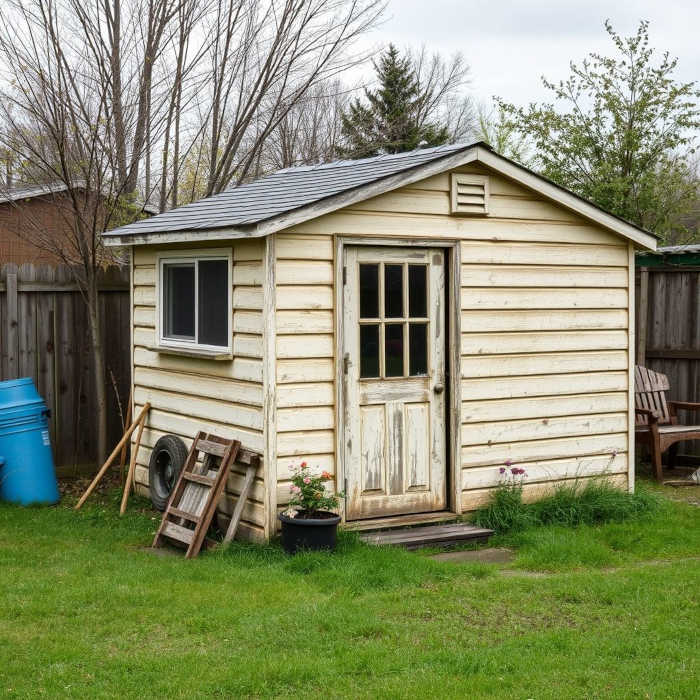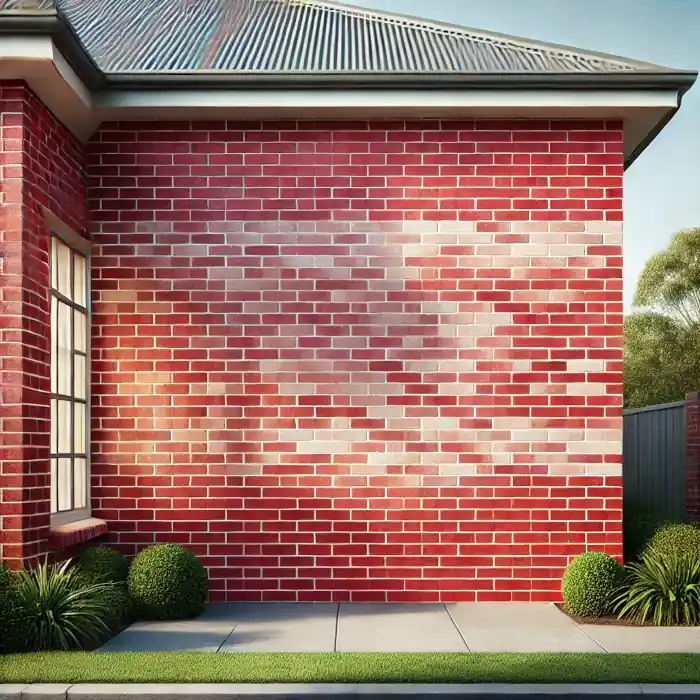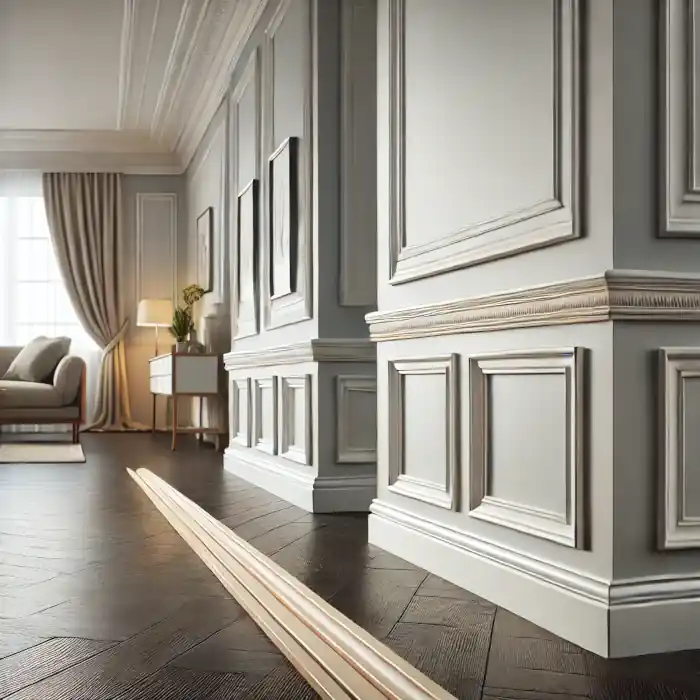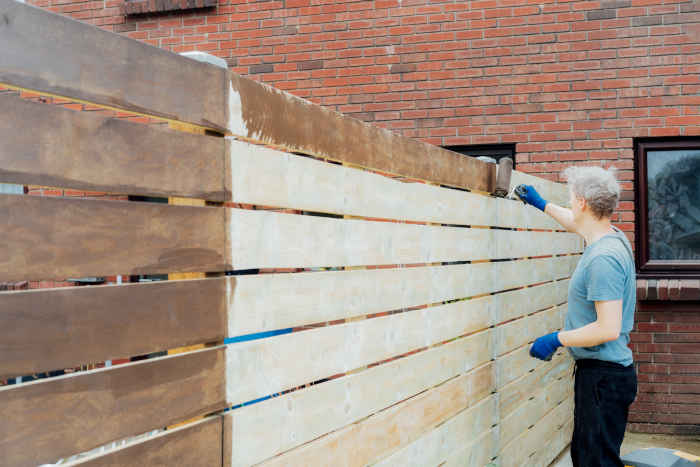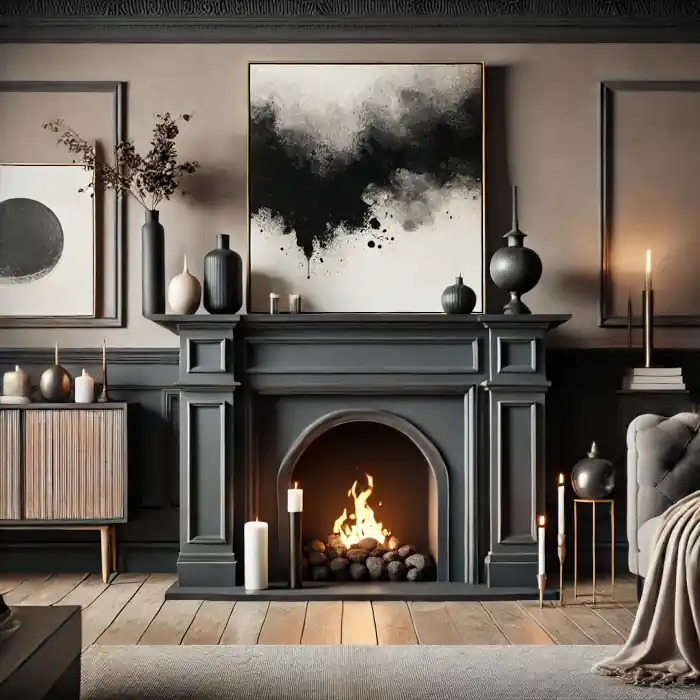As an Amazon Associate, I earn from qualifying purchases. Privacy Policy / Terms
An accent wall is one of the simplest ways to bring personality, warmth, and dimension to a room. Whether it’s a subtle shift in tone or a bold splash of color, a well-designed accent wall can transform how a space feels. For homeowners in Ohio, it’s an affordable and creative way to refresh interiors without repainting every surface.
Accent walls are back in style and more versatile than ever. From matte finishes to textured surfaces, they work in both modern and traditional homes. Understanding the design principles and practical steps behind a feature wall helps ensure the result feels intentional rather than overwhelming.
Do people paint accent walls anymore?
Yes, accent walls are still a popular design choice. While trends evolve, the idea of highlighting a single wall with color or texture remains timeless. Today’s styles lean toward softer contrasts and natural tones that blend with the surrounding decor.
Instead of bright reds or dark blues, many Ohio homeowners now choose earthy greens, warm grays, or deep navy to add depth without overpowering the room. The goal is balance: the accent wall should enhance, not dominate, the space.
What is the rule for painting an accent wall?
The key rule is to choose the right wall. The accent wall should naturally draw attention, such as behind a bed, fireplace, or sofa. It’s important to avoid painting walls that already have large windows or doors, since natural light can distort color and reduce the visual effect.
Accent colors work best when they complement, not clash with, the existing palette. A good guideline is to pick a hue that’s two to three shades darker than your main wall color. Neutral walls paired with a single bold accent can create a modern, balanced design.
When in doubt, paint a sample section first. Observing how light changes throughout the day ensures the color you love in the morning still feels inviting in the evening.
Is it easy to paint an accent wall?
Painting an accent wall is one of the easiest interior projects a homeowner can tackle. However, success depends on proper preparation and precision.
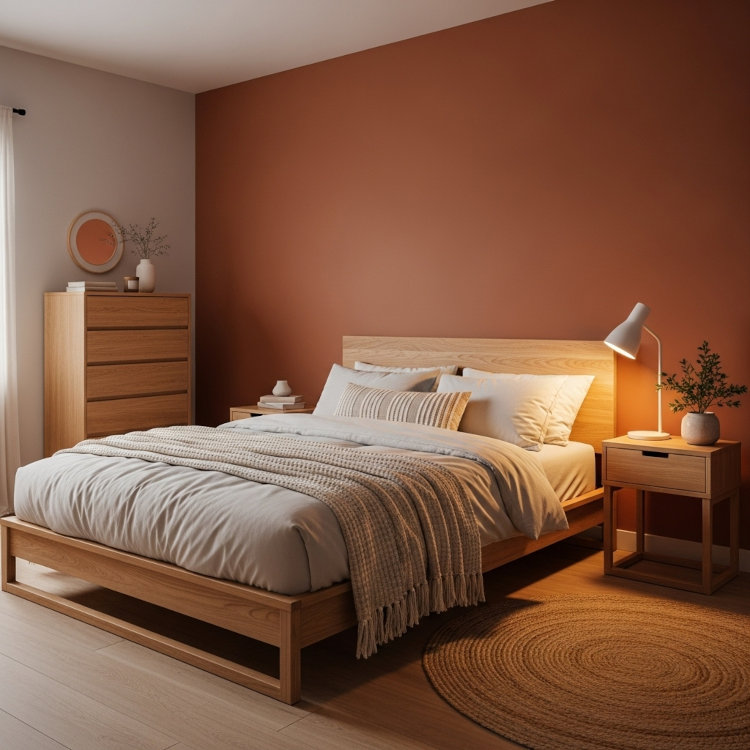
Here’s a simple approach to ensure clean results:
- Prep the wall: Wipe down surfaces and fill any nail holes or dents.
- Use painter’s tape: Create crisp lines along edges and trim.
- Apply primer if needed: Especially when painting over dark or glossy colors.
- Use high-quality paint: It provides smoother coverage and fewer streaks.
While the process is straightforward, professional painters can achieve a more even finish and faster turnaround, especially when walls are textured or ceilings are high.
How much to paint a feature wall?
The cost of painting a feature wall varies depending on size, surface type, and paint quality. On average, professional painters charge $150 to $350 for a single accent wall, including materials and labor.
DIY painters can expect to spend $40 to $75 for supplies, though that depends on the paint brand and tools. Choosing durable, washable paint ensures longer-lasting color and reduces the need for touch-ups.
Homeowners often find that hiring a professional ensures the wall looks flawless, with precise edging and consistent texture. It’s especially important in living rooms or open spaces where lighting highlights imperfections.
Is it cheaper to DIY or hire painters?
Painting an accent wall yourself is cheaper upfront, but hiring professionals can save time and prevent mistakes. DIY projects may require additional coats, repairs, or cleanup if edges bleed or the finish turns uneven.
Professional painters use proper techniques, brushes, and rollers to achieve a smoother surface with fewer visible marks. They also know how to handle challenging wall materials or complex layouts that make DIY efforts more difficult.
For most homeowners, hiring experienced painters for accent work is an affordable way to guarantee a high-end result without the stress.
Design Ideas for Accent Walls
Accent walls are no longer limited to bold colors. Today’s designers use paint, texture, and pattern to define a space while keeping it cohesive.
Popular accent wall ideas in Ohio homes include:
- Deep, rich tones in living rooms: Colors like charcoal or navy anchor furniture and decor.
- Soft neutrals in bedrooms: Beige, sage, and clay create calm, restful atmospheres.
- Contrasting trim or molding: Painted trim can serve as a subtle but stylish accent.
- Textured finishes: Techniques like brushed metallic or matte plaster add visual interest.
Experimenting with placement and finish helps personalize each room. The goal is to create visual flow, not distraction.
Why Accent Walls Still Matter
Accent walls remain a favorite among Ohio homeowners because they deliver noticeable impact with minimal cost. Whether used to highlight architecture or define space in an open layout, they make interiors feel intentional and refined.
They’re also versatile and an easy update when trends or preferences change. A new color or sheen can modernize a room without the need for furniture changes or full repaints.
For those unsure where to begin, professional interior painters can help with color consultation and execution. From modern neutrals to bold feature colors, a single wall can completely transform how your home looks and feels.
Final Thoughts
Accent walls prove that small changes can create major results. With the right preparation, color, and professional craftsmanship, any room can gain new life through a single painted surface.
Whether you prefer a subtle statement or a dramatic contrast, accent walls continue to offer one of the easiest, most rewarding upgrades for Ohio homes by combining creativity, affordability, and timeless style.
Views Expressed DisclaimerThe views, opinions, and information presented in this article are for informational purposes only and do not necessarily reflect the official policies or positions of Crocker Home Painting Company. While every effort has been made to ensure accuracy, Crocker Home Painting Company is not liable for any errors, omissions, or decisions made based on the content provided. Readers are encouraged to consult professionals for specific advice or assistance related to their unique circumstances.

